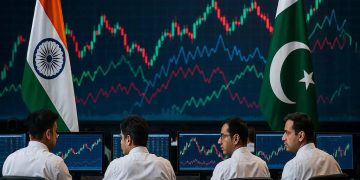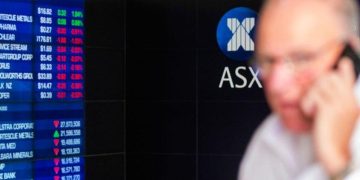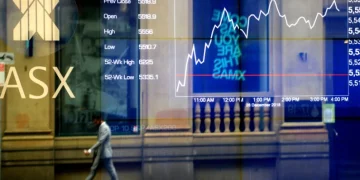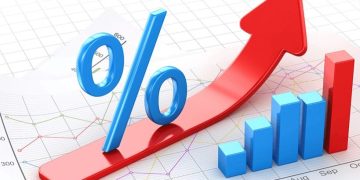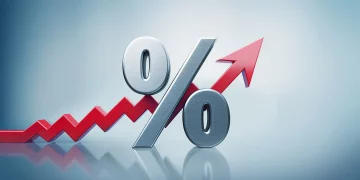Introduction
As global debt levels reach unprecedented heights, many investors and analysts are beginning to ask whether the world is heading toward a financial crisis. The accumulation of debt in both developed and emerging markets has sparked debates about its long-term sustainability and potential risks to financial markets. This article will review the current state of global debt, analyze expert opinions on the systemic risks associated with growing debt levels, and explore how high national and corporate debt could affect financial stability and investment portfolios. Additionally, we will look at the potential for debt crises and the role of central banks in mitigating these risks.
1. Review of the Current State of Global Debt Across Developed and Emerging Markets
Global debt has surged in recent years, with both public and private sector borrowing rising rapidly. According to the Institute of International Finance (IIF), global debt reached over $300 trillion in 2023, a record high. This debt includes government bonds, corporate loans, and household mortgages across both developed and emerging markets. Key factors contributing to this increase include:
- Government Debt: Governments around the world, particularly in advanced economies, have taken on substantial debt to finance stimulus measures, social programs, and pandemic-related expenditures. For example, the U.S. and European Union countries saw sharp increases in government debt during the COVID-19 pandemic. In some emerging economies, governments have also borrowed heavily to fund infrastructure and development projects.
- Corporate Debt: Corporations have also ramped up borrowing, particularly in low-interest rate environments. Companies have used cheap debt to finance expansion, mergers, and share buybacks, with many of them taking on more debt than they can potentially handle in the future. The growing trend of corporate debt raises concerns about the financial health of companies and their ability to meet obligations.
- Household Debt: Household debt has also grown in many countries, driven by low interest rates and increased access to credit. Consumers have taken on higher levels of debt through mortgages, student loans, and credit cards, leading to concerns about personal financial stability.
- Emerging Markets: In emerging markets, debt has risen sharply, particularly in countries like China, Brazil, and India. Many of these nations have borrowed to finance infrastructure development, while some have experienced currency depreciations that make their foreign-denominated debt more expensive to service.
2. Expert Opinions on Whether the Growing Debt Levels Pose a Systemic Risk to the Global Economy
Experts are divided on whether the current global debt levels pose a systemic risk to the global economy:
- Systemic Risk Advocates: Some economists argue that the growing levels of debt in both developed and emerging markets present a clear systemic risk. They point to the potential for debt crises, where countries or corporations may be unable to meet their obligations, triggering widespread financial instability. The high levels of public debt in major economies like the U.S. and Japan could lead to inflation, currency devaluation, and higher interest rates, which could further strain the global financial system.
- Debt as a Manageable Issue: Other experts suggest that debt may not pose an immediate systemic risk, as long as the global economy remains stable and central banks maintain control over inflation and interest rates. They argue that many governments can service their debt through fiscal policies like raising taxes or reducing spending. Additionally, the global financial system has become more resilient to debt crises, with mechanisms like the International Monetary Fund (IMF) and European Central Bank (ECB) stepping in to assist struggling economies.
- Debt Cycles: Some analysts argue that debt cycles are a normal part of economic growth and that the current levels of debt should be viewed in the context of past financial cycles. While debt levels are high, they are not unprecedented when compared to previous periods of economic expansion. The key, they argue, is whether governments and corporations can manage their debt effectively and avoid triggering a financial collapse.

3. The Impact of High National and Corporate Debt on Financial Stability and Investment Portfolios
High levels of national and corporate debt can have significant impacts on financial stability and investment portfolios:
- National Debt and Inflation: Countries with high debt levels may face inflationary pressures as governments are forced to increase the money supply to service their debt. Inflation erodes the purchasing power of consumers and can lead to higher interest rates, which negatively affects bond prices and investment returns. In the worst-case scenario, countries may resort to debt monetization, printing money to pay off their debt, which can lead to a currency crisis.
- Corporate Debt and Market Volatility: High corporate debt levels can lead to market volatility, particularly if companies struggle to meet their debt obligations. As companies face financial difficulties, their stock prices may drop, leading to losses for investors. The risk of corporate bankruptcies increases when interest rates rise, making it more expensive for companies to refinance their debt. Investors in high-yield bonds or emerging market debt may be particularly vulnerable to default risk.
- Sovereign Debt Risk: Sovereign debt crises, such as those seen in Greece and Argentina in the past, can have far-reaching effects on global markets. If a country defaults on its debt, it can lead to a loss of investor confidence, higher borrowing costs for other nations, and a broader global economic downturn. This risk is particularly pertinent for emerging markets, which often carry higher debt levels and may have less access to financial markets than developed countries.
- Sector-Specific Impacts: Certain sectors, such as real estate, banking, and consumer goods, may be more sensitive to debt levels. For example, real estate companies that rely heavily on borrowing may face significant challenges if interest rates rise or if they are unable to refinance their debt. Similarly, the banking sector could face higher default rates on loans and increased credit risk, which may negatively affect profitability.
4. The Potential for Debt Crises and the Role of Central Banks in Mitigating Risks
The risk of debt crises remains a concern for investors, particularly in the context of global economic uncertainty:
- Emerging Market Debt Crises: Emerging markets are particularly vulnerable to debt crises, especially those with high foreign-denominated debt. When a currency depreciates, the cost of servicing foreign debt rises, potentially leading to defaults. Countries like Turkey and Argentina have experienced debt crises in recent years, and many analysts worry that other emerging markets may be at risk if global interest rates rise or if commodity prices fall.
- The Role of Central Banks: Central banks play a key role in managing debt risks by controlling interest rates and implementing monetary policies. In the U.S., the Federal Reserve and the European Central Bank have kept interest rates low for many years, which has made it easier for governments and corporations to service their debt. However, as interest rates begin to rise, debt servicing costs will increase, potentially triggering a wave of defaults. Central banks also have the power to intervene in the event of a debt crisis, providing liquidity to markets and stabilizing financial systems.
- Global Coordination: Global coordination among central banks and international financial institutions like the IMF will be crucial in managing debt risks. While the IMF has provided emergency loans to countries in financial distress, its ability to manage widespread debt crises will depend on the level of cooperation between global powers and their willingness to implement coordinated financial policies.
Conclusion
As global debt levels continue to rise, the risks to financial stability and investment portfolios become more pronounced. While some experts argue that these risks can be managed through effective policy measures, others believe that the growing debt burden poses a systemic threat to the global economy. Investors must remain vigilant, monitoring debt levels and interest rate movements, and consider strategies to hedge against potential defaults or inflationary pressures. With the role of central banks and international institutions becoming increasingly critical, the future of global debt will depend on the ability of governments and financial markets to navigate these complex challenges.








